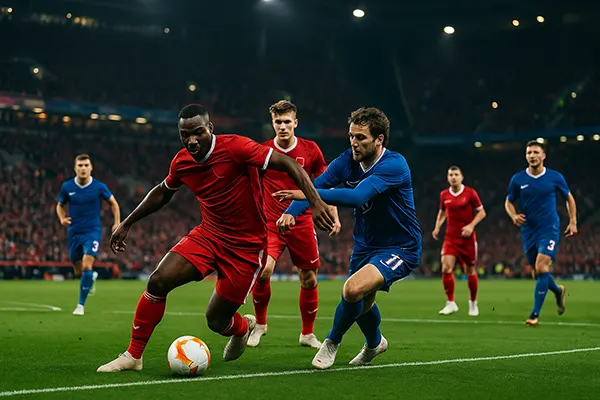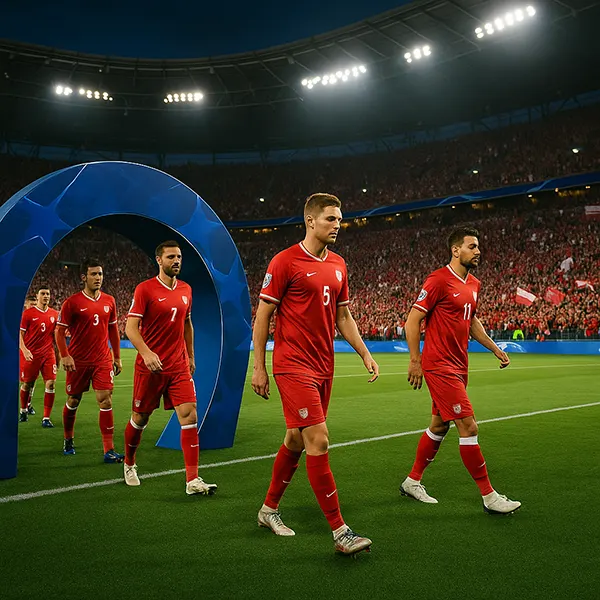Successful Return of Eastern European Clubs to European Competitions: How the Betting Map is Changing in 2025

In recent years, Eastern European football clubs have been making a significant comeback in European competitions, challenging the traditional dominance of teams from Western Europe. As of the 2024/25 season, several clubs from countries such as Poland, Serbia, Ukraine, and Romania have reached the group stages and knockout rounds of the UEFA Champions League, Europa League, and Conference League. This resurgence is not only reshaping the sporting narrative but also influencing betting markets, as odds and strategies are being recalculated in response to the evolving competitive landscape.
Resurgence of Eastern European Football on the Continental Stage
The 2024/25 season has seen a record number of Eastern European clubs progress to the later stages of European competitions. Teams like Dinamo Zagreb, Red Star Belgrade, Shakhtar Donetsk, and Legia Warsaw have demonstrated that tactical discipline, youth development, and strategic foreign signings can bridge the gap with wealthier Western European rivals. This resurgence has been fuelled by improved infrastructure, better financial management, and increased investment from local sponsors and foreign stakeholders who believe in the potential of these markets.
For example, Shakhtar Donetsk, despite the challenges of relocating their home matches, have managed to secure key wins against established European giants, while Dinamo Zagreb continues to produce top-level talent capable of competing at the highest level. The Conference League has also given smaller Eastern European clubs a realistic path to silverware and a chance to build international reputations. These successes are not isolated events but part of a wider trend that has been gaining momentum since the early 2020s.
Crucially, UEFA reforms in prize distribution have made participation in group stages more financially rewarding, allowing clubs to reinvest in squad depth and facilities. This has helped level the playing field and given ambitious clubs from the region the resources needed to compete more consistently.
Impact on Team Valuations and Player Transfers
One of the key consequences of this competitive rise has been the sharp increase in player valuations and transfer market activity involving Eastern European clubs. Talented young players from Croatia, Serbia, and Ukraine are now being scouted earlier and sold for higher fees to top leagues, significantly boosting club revenues. This cycle of talent development and profitable sales has strengthened the financial stability of many clubs.
Moreover, foreign investors are showing growing interest in these markets. Ownership changes in clubs such as Ferencváros and Partizan Belgrade have brought in modern management structures and long-term sporting strategies. These investments are improving training facilities, youth academies, and scouting networks, ensuring sustainable growth rather than short-term success.
As a result, Eastern European football is increasingly seen as a valuable export hub for talent, and betting markets are adjusting to account for the unpredictability and depth these teams bring to continental competitions.
Shifts in European Betting Trends
The improved performances of Eastern European clubs are changing the dynamics of sports betting in 2025. Bookmakers are now paying closer attention to clubs from these regions, adjusting odds that previously underestimated their chances against top-tier European teams. Bettors who follow these leagues closely are finding more value in betting markets, as in-depth knowledge of lesser-known teams can lead to more accurate predictions.
Live betting markets, in particular, have seen increased activity during matches involving Eastern European sides, as their unpredictable style often results in dramatic comebacks and high-scoring games. This unpredictability has made them popular among bettors looking for higher potential returns, while also challenging oddsmakers to refine their algorithms to better reflect the actual competitive balance.
Additionally, local betting companies in Eastern Europe have expanded their operations, offering specialised markets that focus on domestic leagues and club performances in Europe. This regionalisation of betting options is attracting both local and international customers who are seeking alternative markets beyond the traditional Western European focus.
Rise of Analytical and Data-Driven Betting Models
Another noticeable shift is the rise of data-driven betting models tailored to the specific characteristics of Eastern European football. These models take into account factors such as travel distances, climate differences, and playing styles that differ from Western European norms. Bettors using these advanced analytical tools are able to spot market inefficiencies and gain a competitive edge.
For instance, teams from countries like Kazakhstan or Georgia, when playing at home, often benefit from challenging travel logistics and unique pitch conditions, factors that can significantly influence match outcomes. Such insights are now increasingly incorporated into betting strategies by professional bettors and syndicates.
The integration of AI-driven analytics, combined with historical performance databases, is making it possible to predict not only match results but also in-play developments such as goal timing, player bookings, and set-piece effectiveness. This trend is reshaping how bettors approach Eastern European football in 2025.

Economic and Cultural Impact on the Region
The success of Eastern European clubs in Europe is also having a wider economic and cultural impact. Increased visibility in high-profile competitions attracts tourism, boosts merchandise sales, and strengthens national football identities. Cities hosting European matches experience spikes in hotel bookings, restaurant sales, and media attention, benefiting local economies beyond the sporting sphere.
Moreover, youth interest in football is growing, with academies reporting higher enrolment rates and increased participation in grassroots programmes. This not only contributes to the long-term talent pipeline but also fosters community pride and cohesion. Football is once again becoming a unifying cultural force in regions that have faced economic or political challenges in recent decades.
In terms of media rights, broadcasters are beginning to secure more deals to air matches involving Eastern European clubs, recognising the growing interest both domestically and internationally. This additional revenue stream further empowers clubs to compete at the highest level, reinforcing the positive cycle of investment, success, and reinvestment.
Future Prospects and Sustainability
Looking ahead, sustainability will be the key to maintaining and building on these successes. While short-term results are promising, long-term competitiveness will require consistent investment in youth development, sports science, and infrastructure. Governing bodies and clubs must ensure that financial growth does not lead to overspending or instability.
There is also potential for increased regional cooperation, such as cross-border tournaments and shared training programmes, which could strengthen the overall level of competition and further boost the region’s profile in Europe. Collaborative efforts in marketing and brand building can help Eastern European clubs attract new sponsors and fans globally.
If current trends continue, by the end of the decade Eastern European clubs could become regular contenders in the latter stages of European competitions, permanently altering the balance of power in European football and the betting markets that revolve around it.




